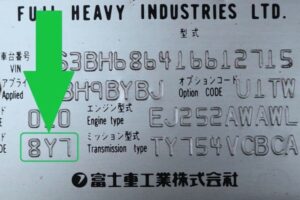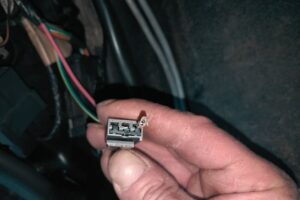A 2-step car is a type of vehicle that has a two-step rev limiter installed. This device allows the driver to control the RPM of the car’s engine, which can be useful for achieving the perfect launch during a race.
The two-step rev limiter works by allowing the driver to set two different RPM limits, one with a lower RPM and the other at a higher RPM. When the driver activates the two-step rev limiter, the car’s engine will rev up to the pre-set RPM limit and hold there until the driver releases the clutch.
The two-step rev limiter is a popular modification for drag racing enthusiasts. It can help drivers achieve faster and more consistent launches, which can be crucial in a drag race.
However, it is important to note that using a two-step rev limiter can be hard on the car’s engine, especially if it is not set up properly. If the RPM limit is set too high, it can cause excessive wear and tear on the engine, which can lead to costly repairs down the road.
Therefore, it is crucial to have the two-step rev limiter installed and set up by a professional who knows what they are doing.
Understanding 2-Step Cars

As per Top Flight Automotive (.com), 2-step cars are vehicles that have a rev limiter applied to the engine’s RPM to a predetermined limit, typically around 4,500 RPM. This system is designed to improve the car’s launch performance, allowing for quicker 0-60 times and faster acceleration.
In this section, we will discuss the engine and ignition, fuel, and power aspects of 2-step cars.
Engine and Ignition
The engine and ignition system of a 2-step car are critical components that work together to ensure the car’s performance is optimized. The engine’s design, including the camshaft and cylinder head, plays a significant role in the car’s power output.
The ignition system, which includes the spark plugs, ignition coils, and distributor, is responsible for providing the spark that ignites the fuel in the engine.
When a 2-step system is installed, the ignition timing is adjusted to keep the engine at the predetermined RPM limit while waiting to launch. The system also includes a launch control feature that allows the driver to hold the engine at the predetermined RPM limit while the car is stationary.
Fuel and Power
Fuel is a crucial component of any car, and 2-step cars are no exception. The fuel system must be designed to deliver the right amount of fuel to the engine at the correct time. The fuel injectors, fuel pump, and fuel pressure regulator all work together to ensure the car has the right amount of fuel.
In a 2-step car, the fuel system must be designed to deliver more fuel to the engine during launch. This is because the engine requires more fuel to produce the necessary power to launch the car.
The power output of a 2-step car is also dependent on the engine’s design and the fuel system’s ability to deliver the right amount of fuel.
Overall, 2-step cars are designed to provide better launch performance and faster acceleration. The engine and ignition system, fuel system, and power output are all critical components that work together to achieve this goal.
With the right combination of components and tuning, a 2-step car can provide an exhilarating driving experience.
The Art of Launching
Launching a car with a 2 step rev limiter requires a combination of skill, technique, and timing. The goal is to achieve the perfect launch by balancing the clutch, gear, traction, and wheel spin. In this section, we will explore the key factors that contribute to a successful launch.
Clutch and Gear
The clutch and gear play a crucial role in launching a car. The driver must engage the clutch at the right moment and shift gears smoothly to maintain momentum.
A common technique is to slip the clutch, which involves partially engaging the clutch to prevent stalling and provide more control over the car’s speed. However, excessive clutch slipping can lead to overheating and premature wear.
The choice of gear also affects the launch. A lower gear provides more torque and acceleration, but can also cause excessive wheel spin.
Conversely, a higher gear may reduce wheel spin but can also result in slower acceleration. The driver must choose the right gear for the specific car and track conditions.
Traction and Wheel Spin
Traction and wheel spin are critical factors in launching a car. Traction refers to the grip between the tires and the road surface, while wheel spin occurs when the tires lose traction and spin faster than the car’s speed. Excessive wheel spin can cause the car to lose control and waste precious time.
To maximize traction, drivers often perform a burnout before launching. This involves spinning the tires to heat them up and remove any debris or water on the surface.
The driver must also choose the right tires for the track conditions, with softer compound tires providing better grip but also wearing out faster.
In conclusion, launching a car with a 2 step rev limiter requires a combination of skill, technique, and timing. The driver must balance the clutch, gear, traction, and wheel spin to achieve the perfect launch.
By mastering these key factors, drivers can improve their performance on the track and achieve faster lap times.
Performance and Control

Rev Limiters and Torque
According to LMR (.com), a 2-step rev limiter is an electronic device that allows the driver to control the RPM of their car’s engine. The device is designed to help the driver achieve the perfect launch by allowing them to set two different RPM limits: one with a lower RPM and the other at a higher RPM.
When the 2-step rev limiter is activated, the car’s engine will rev up to the preset RPM, and the driver can release the clutch to launch the car. This feature helps to prevent wheel spin and provides better traction, which is essential for a successful launch.
The 2-step rev limiter can also help to increase torque, which is the rotational force produced by the engine. Torque is necessary for accelerating the car and maintaining speed.
By setting the RPM limit, the driver can control the amount of torque produced by the engine, which can improve the car’s performance.
Boost Pressure and Anti-Lag
Boost pressure refers to the amount of air pressure that is forced into the engine by the turbocharger or supercharger. Boost pressure can increase the amount of power produced by the engine, which can improve the car’s acceleration and top speed.
However, too much boost pressure can damage the engine, so it is important to monitor the boost pressure and ensure that it stays within safe limits.
Anti-lag is a feature that is commonly used in rally cars. It is designed to keep the turbocharger spinning even when the driver is not accelerating.
This feature helps to reduce turbo lag, which is the delay in the turbocharger’s response to the driver’s throttle input. By reducing turbo lag, the driver can improve the car’s acceleration and performance.
In summary, the 2-step rev limiter, torque, boost pressure, and anti-lag are all important factors that can affect a car’s performance and control. By understanding how these factors work together, drivers can optimize their car’s performance and achieve better results on the track.
Safety and Precautions

When it comes to installing a 2 step rev limiter in a car, it is important to consider the safety and precautions that need to be taken. Failure to do so could lead to engine damage, stress, and other issues that could impact the reliability of the vehicle.
In this section, we will discuss some of the key safety concerns and precautions that need to be taken when installing a 2 step rev limiter.
Engine Damage and Stress
One of the main concerns when installing a 2 step rev limiter is the potential for engine damage and stress. When a 2 step rev limiter is used, it allows the driver to rev the engine to a certain point before the limiter kicks in and prevents further revving.
However, if the engine is revved too high or too often, it can cause damage to the engine and put unnecessary stress on the components.
To avoid engine damage and stress, it is important to properly set the rev limits on the 2 step rev limiter. This should be done in accordance with the manufacturer’s recommendations and should take into account the specific make and model of the vehicle.
Additionally, it is important to monitor the engine for any signs of damage or stress, such as unusual noises or vibrations, and to address these issues promptly.
Reliability and OEM Manufacturers
Another important consideration when installing a 2-step rev limiter is the impact it can have on the reliability of the vehicle. If the 2 step rev limiter is not installed properly or if it is used improperly, it can cause issues that can impact the overall reliability of the vehicle.
To ensure the reliability of the vehicle, it is important to work with OEM manufacturers when installing a 2 step rev limiter.
OEM manufacturers have the knowledge and expertise to properly install and configure the rev limiter, and they can also provide guidance on how to use it safely and effectively.
In addition to working with OEM manufacturers, it is also important to follow all safety precautions when using a 2 step rev limiter.
This includes monitoring the engine for any signs of damage or stress, using the rev limiter only in appropriate situations, and avoiding excessive revving that could cause damage to the engine.
Speaking from my experience as a mechanic, adding a 2 step rev limiter can indeed enhance a vehicle’s performance and control. Nonetheless, it’s crucial to prioritize safety and collaborate with OEM manufacturers to guarantee the vehicle’s durability and reliability.
To Sum Up
In summary, a 2 step rev limiter is an electronic device that allows drivers to control the RPM of their car’s engine. It is designed to help drivers achieve the perfect launch by allowing them to set two different RPM limits, one with a lower RPM and the other at a higher RPM.
When drivers activate the two-step rev limiter, their car’s engine will rev up to the predetermined RPM limit before launching.
The 2 step rev limiter can improve a car’s performance on the track. It can help drivers achieve a faster launch, which is critical in racing. However, it’s important to note that the 2 step rev limiter is not a magic solution to improve a car’s performance.
Other factors like driving style, gas pedal timing, and one’s overall performance on the track also play a critical role in determining a car’s success.
It’s also worth noting that while the 2 step rev limiter can help drivers achieve a faster launch, it can also be illegal in some areas. It’s important for drivers to check the laws in their local area before installing a 2 step rev limiter in their car.
Overall, the 2 step rev limiter is a useful tool for drivers looking to improve their performance on the track. However, it’s important to use it responsibly and in accordance with local laws and regulations.

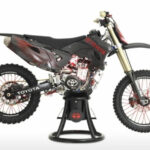

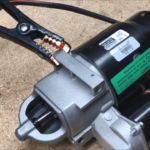
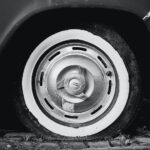
![How to Rev a Car Engine [Automatic and Manual] how to rev a car engine](https://roadsumo.com/wp-content/uploads/2022/03/how-to-rev-a-car-engine-150x150.jpg)

